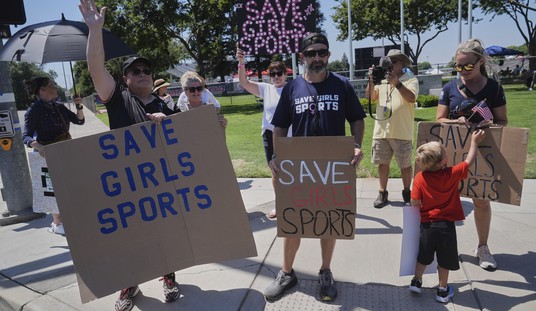A good catch by Nate Silver that has me confounded this afternoon. On May 12, the CDC published this composite of models predicting how the next several weeks of the pandemic would go. Most correctly anticipated that infections would continue to decline as vaccinations increased (although one model expected a surge back to 500,000 cases per week!) but the average of the models expected that we’d dip to around 200,000 weekly cases, or 28,600 cases daily.

The actual seven-day average is … 13,927 cases, a little less than half of the models’ collective best guess. Silver wondered: Why are we beating the estimates by so much?
It reminds me of what I wrote earlier today in another post about Rochelle Walensky describing her sense of “impending doom” in late March about the rise of the B.1.1.7 British variant in the U.S. Since she said that, the British variant has indeed become the dominant strain of the coronavirus here. And yet, cases have dropped by 80 percent.
What’s going on? Have we really beaten expectations due to some unknown factor that’s mitigating the spread or are the experts once again just bad at their jobs by underestimating the amount of immunity in a population where more than 50 percent have been fully vaccinated and many millions of others have recovered from COVID?
Could be both. The most obvious possibility to explain lower-than-expected transmission right now is the weather. The south started seeing declining case counts in March even as northern states like Michigan and Minnesota continued to struggle, a clue that warmer weather was having a substantial effect on infection. People in the south were outside more, where the virus doesn’t spread, and there was more sunshine and heat, which the virus doesn’t like. During April and May, as the northern U.S. warmed up too, cases began to collapse everywhere. Scientists might have simply underestimated the degree to which SARS-CoV-2 is a seasonal virus. Although, as Silver pointed out, that cuts both ways. If the climate has more effect on transmission than we thought, then lower-than-expected cases in spring could mean higher-than-expected cases in fall.
Not all warm weather is created equal either. At this time last year, Texas was a week or so away from the start of its first true wave of the pandemic:

Not coincidentally, mid-June is when Texas heat tends to tick up from the balmy 80s to the uncomfortable 90s, sending people back indoors to the comfort of air conditioning. By July 3 of 2020, Greg Abbott had ordered a statewide mask mandate to try to limit the surging number of infections. If we really are doing better than expected right now because of a seasonal effect on the virus, that should start to reverse in the next few weeks. Obviously it won’t produce a wave like we saw last year in light of how many people have been vaccinated, but we might see cases tick up instead of continue the downward track that the models last month projected.
There’s another possibility besides the weather to explain why we’re seeing fewer cases than the CDC thought we would. What if … we’re just testing fewer people now? If you test a million people and 10,000 are positive in April and then you test 500,000 people and 5,000 are positive in May, you’ll have half as many cases in May but the same rate of positive tests. It would be misleading in those circumstances to say that your situation has improved from one month to the next. The state of the pandemic would be the same, you’d just be seeing less of it because of the decline in testing.
And in fact, the U.S. is doing much less testing now than it was not long ago. In April, daily tests frequently exceeded 1.3 million. Over the past month (and especially the last few weeks), daily tests have often been below a million per day. Maybe infections are still happening at the rate projected in the CDC’s models but people aren’t bothering to get tested anymore.
There’s a wrinkle in that theory, though. The positivity rate, which measures the number of daily cases as a percentage of daily tests, has continued to fall. In other words, the number of positive tests is shrinking even faster than the number of tests overall is.

Today’s positivity rate of 2.0 percent is the lowest of the pandemic. That rate shouldn’t be going down if the same percentage of the population is infected this month as was the case last month. On the contrary, with the U.S. doing less testing, we might expect it to be going up. It must be that infections really are falling.
Here’s my best guess at how the CDC’s projections might be true, though. If in fact a lot of vaccinated people are getting infected and developing asymptomatic or mild cases thanks to their immunity, it may be that very few of them are getting tested. If they have no symptoms they’d have no reason to seek out a test, after all. And if they have mild symptoms, they might talk themselves into believing that it must be something other than COVID since they’re vaccinated and thus they’re not “supposed to” get infected. Maybe it’s the flu or something other bug going around, they tell themselves — when in reality it’s the coronavirus. Then, in a few days, they shake it off and forget all about it. In that case, it may be that a lot of people who are positive for COVID are “missing” from the data because they no longer see a need to get tested whereas they would have gone for a test a few months ago before they were vaccinated. I’d be curious to see what the CDC makes of that — especially now that they’re encouraging vaccinated people not to bother with routine testing if they don’t want to.








Join the conversation as a VIP Member